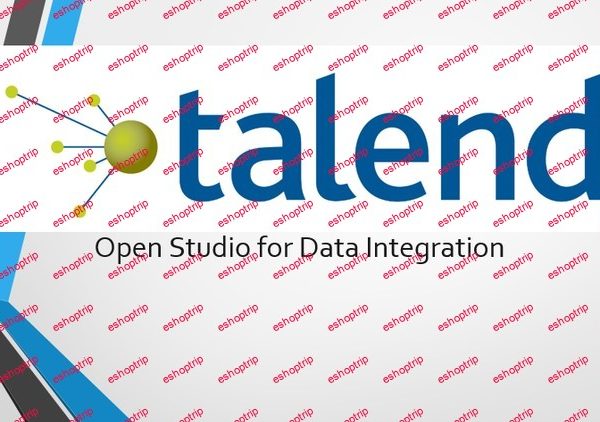Published 9/2023
MP4 | Video: h264, 1280×720 | Audio: AAC, 44.1 KHz
Language: English | Size: 6.45 GB | Duration: 19h 47m
No need of any sub title, In any sql topics even the most complex topics like triggers stored proc were explained easily
What you’ll learn
Learns how to install mysql workbench
Learns how to work with mysql commands
Learns how data is stored and modified in SQL
Will provide complete knowledge on all database objects of sql
Requirements
No programming knowledge required, Learner must have a laptop/computer to pracice
Description
Why SQLStore large number of recordsShare huge data set among many peopleAdd and edit data easilyQuick and easy to find informationRDBMS TERMINOLOGYColumn as Attribute Row as Entity InstanceTable as EntityAlternateKey as UniqueKeyRELATIONSHIPS Cardinality90% of the tables in database will be linked with another tables.10%of the tables will be independent.There are three types of relationships between tablesone to oneone to manymany to manyTables can have a single / multiple relationships or may not have relationships.Structured data – 2 dimensional data Rows,ColumnsPrimaryKey in one table will be given as ForiegnKey in another table to build relationship.DATA MODELINGRDBMSPrimaryKey & ForiegnKey with relationship between them.1 to 1 – any PrimaryKey can become ForiegnKey1 to many employees in a departmentPK of parent table will be FK in child tableDepartment table Deptid(PK),DeptName,Employees Table Empid,EmpName,DeptId(FK)many to many(students and teachers,patients & doctors,Hospital & Doctors)(TeacherId,TeacherName)(StudentId,StudentName,TeacherId)New table will be created and extra column will be added(Bridge Table)Patient Table(PatientNo(PK),PatientName,Adress),Doctors Table(DoctorNo(PK),Name,Qualification,Salary, DateOfJoining, DateOfResigning)Patient Doctor Table()SDLC-Software Development Life CycleRequirement Analysis & Design Development Testing ReleaseDomain expert(SRS documentation) Architect SQL developers Testers Deployers(TL/Manager)ERD(Entity Relationship Diagram)Peter Chan-Used to design DatabaseReferential Integrity SQL server performs existence check when we create relationship.SELF REFERENTIAL TABLESA table which has both PrimaryKey and ForiegnKey in it & ForiegnKey refering the primary key in the same table.You are going to learn commands (DDL,DML,DQL,DCL,TCL)datatypes constraints CONSTRAINSNull DefaultPrimaryKey UniqueKeyForiegnKeyCheckAuto Incrementviewsoperatorsquery writingjoinssub queryderived tableViews IndexesStored ProceduresTriggers FunctionsCursors
Overview
Section 1: Introduction
Lecture 1 Introduction and Installation of MYSQL
Lecture 2 Introduction to mysql part – 1
Lecture 3 Introduction to mysql part -2
Section 2: Commands
Lecture 4 Commands
Lecture 5 Commands Part 2
Lecture 6 Commands Part 3
Section 3: Constraints
Lecture 7 Constraints
Lecture 8 Constraints Part 2
Section 4: Query Writing
Lecture 9 Query
Section 5: Sample tables
Lecture 10 Banking tables Creation
Section 6: Joins in SQL
Lecture 11 Joins
Lecture 12 Self Join
Section 7: Sub Query
Lecture 13 Sub Query
Section 8: Derived Table
Lecture 14 Derived table
Section 9: Views
Lecture 15 Views
Section 10: Indexes
Lecture 16 Indexing
Section 11: Sored Procedures
Lecture 17 Stored Prcedure
Lecture 18 Stored Procedure 2
Lecture 19 Stored Procedure 3 & Intro to Error Handling
Section 12: Error Handling
Lecture 20 Error Handling/Exception Handling
Section 13: Triggers
Lecture 21 Triggers Intro
Lecture 22 Triggers Part 2
Lecture 23 Triggers Part 3
Section 14: Functions
Lecture 24 Functions In SQL
Lecture 25 Functions Part 2
Lecture 26 Functions Part 3
Section 15: Transaction Control Language & Data Control Language
Lecture 27 TCL & DCL
Lecture 28 TCL & DCL Part 2
Section 16: Cursors & Wild Card Operators
Lecture 29 Cursors & Wild Card
Section 17: Interview Questions
Lecture 30 Interview
Beginner who is planning to learn mysql completely
Homepage
https://anonymz.com/?https://www.udemy.com/course/sql-from-basics-to-advanced/











Reviews
There are no reviews yet.